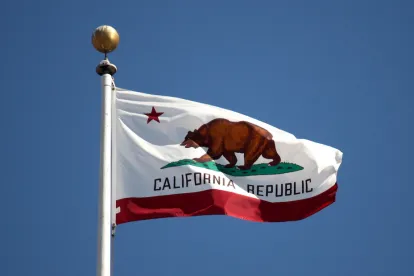On March 19, 2020, California Governor Gavin Newsom issued a Stay At Home Order mandating that all California residents stay home, except as needed to support California’s essential critical infrastructure sectors. This Order has no set end date.
However, as many states across the country begin to slowly reopen their economies, California Governor Gavin Newsom has now published a “Resilience Roadmap” that serves as the overarching plan for California’s incremental reopening. The Resilience Roadmap is comprised of four stages with each stage gradually permitting the reopening of various businesses depending on the exposure risk that they pose.
Stage Two of the Roadmap
Currently, California is in the early phase of Stage Two. Stage Two permits lower-risk businesses to open subject to certain restrictions and modifications, as addressed below. Low-risk businesses currently permitted to re-open in this early phase include curb-side retail, related manufacturing and logistics, office-based businesses, select personal services (car washes, pet grooming, and landscape gardening), childcare, outdoor museums, and open gallery spaces.
Other sectors that are not currently allowed to re-open, but may be able to re-open in a later, advanced phase of Stage Two include retail stores, shopping centers, dine-in restaurants, and schools with modifications.
County Variance in Stage Two
Some counties may be permitted to increase the pace at which they move through Stage Two and may be able to more rapidly re-open other sectors identified above in the “advanced phase,” such as dine-in restaurants. Specifically, if a county can attest that it has met certain readiness criteria and metrics, then that county may be permitted to re-open more quickly and in variance from the rest of the state, though they are not permitted to move on to Stage Three.
On May 18, 2020, Governor Newsom relaxed these criteria significantly. For example, previously, a county had to record zero deaths and no more than one case per 10,000 residents in the last 14 days. Now, there is no threshold for deaths and counties must have less than 25 cases per 100,000 residents in the last 14 days or no higher than an 8% positive rate among people tested for COVID-19 in the last 7 days.
As of May 18, 2020, 23 counties have filed attestations stating that their county meets the readiness criteria and thus are able to move more quickly through Stage Two per their county-specific plan. This list is constantly growing, and will likely exponentially grow following the Governor’s relaxed criteria. Moreover, Governor Newsom’s plan permits counties to maintain their stricter shelter-in-place rules as seen, for example, in Los Angeles. Given this county-by-county variance, employers should continue to monitor their county’s specific plans and guidelines for reopening.
Requirements to Be Met Before a Business Can Re-Open
For those businesses that are able to re-open under either California’s roadmap or their own county-specific plan, all facilities must meet the following requirements:
- Perform a detailed risk assessment and implement a site-specific protection plan;
- Train employees on how to limit the spread of COVID-19, including how to screen themselves for symptoms and stay home if they have them;
- Implement individual control measures and screenings;
- Implement disinfecting protocols; and
- Implement physical distancing guidelines.
In addition to the general criteria listed above, Governor Newsom has issued industry-specific guidance, which makes recommendations based on the unique challenges presented by each industry. In addition to following industry-specific guidance, employers must post an industry-specific checklist in its workplace to show employees and customers that it has reduced the risk:
-
Child Care – Guidance (No Required Checklist)
-
Public Transit and Intercity Passenger Rail – Guidance and Checklist
Key Takeaways and Best Practices for Reopening
With guidance being updated at an ever-increasing pace, employers should actively monitor state, county, and city guidance and make a plan to adapt to such guidance to ensure strict compliance. Employers should also ensure that they review any applicable industry-specific guidance and prepare to post the industry-specific checklist. Further, employers should look to guidelines issued by California’s Division of Occupational Safety and Health to confirm that its Injury and Illness Prevention Program remains in compliance.
Current government guidance prioritizes key prevention practices for businesses that are seeking to reopen, such as physical distancing to the maximum extent possible, use of face coverings by employees and customers or clients, frequent handwashing and regular disinfecting, and training employees on these and other elements of the COVID-19 prevention plan. Given such extensive guidance, employers should take steps now to develop policies and practices that can be implemented once able to re-open in order to ensure a smooth transition to a safe working environment. For example, employers may consider policies on medically testing employees before they enter the workplace and requiring face coverings.
Alongside efforts to institute health and safety policies at the worksite to create a safer work environment, employers should actively develop a plan for post-pandemic hiring. For example, the City of Los Angeles has issued guidance requiring covered employers to offer priority hiring for some laid off workers.
As you are aware, things are changing quickly and there is no clear-cut authority or bright line rules. This is not an unequivocal statement of the law, but instead represents our best interpretation of where things currently stand. This article does not address the potential impacts of the numerous other local, state and federal orders that have been issued in response to the COVID-19 pandemic, including, without limitation, potential liability should an employee become ill, requirements regarding family leave, sick pay, and other issues.




 />i
/>i
